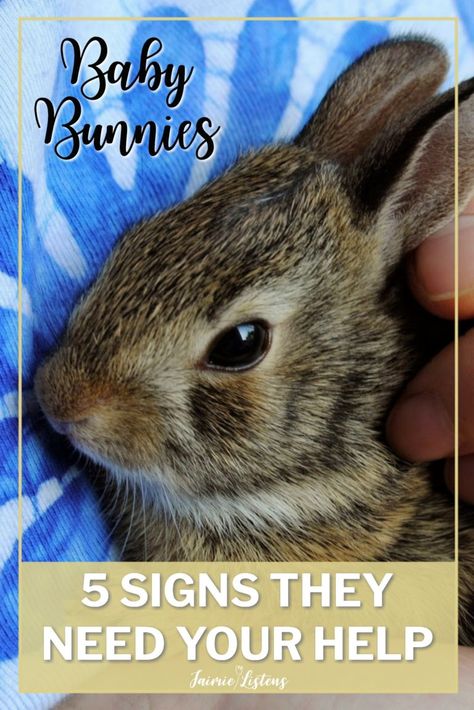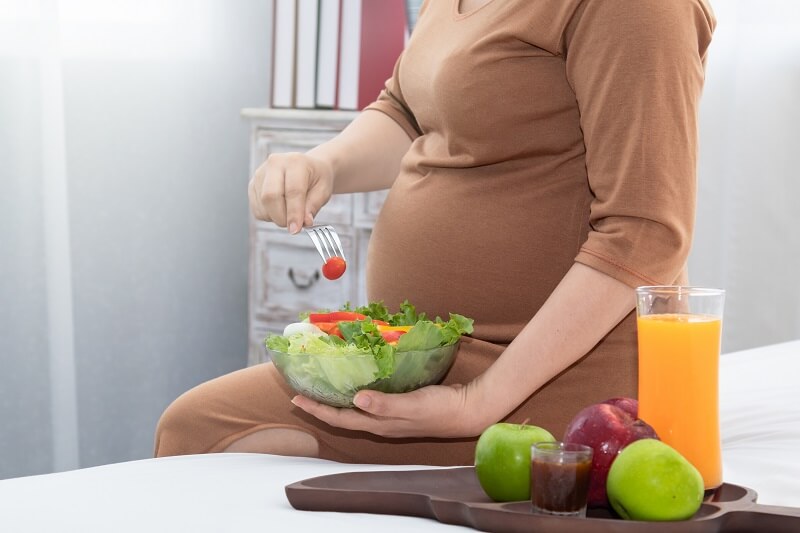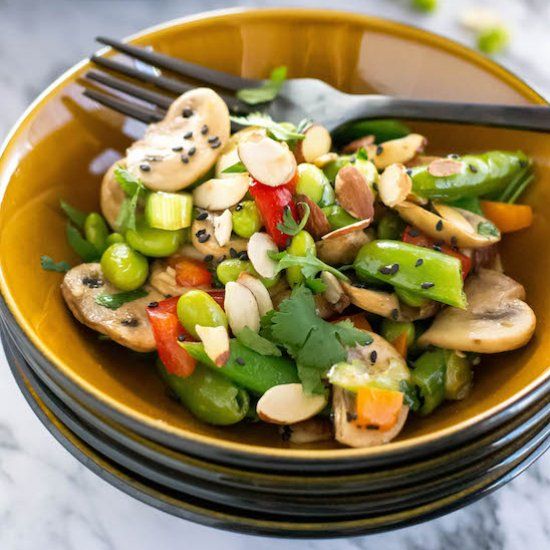Kidney bean baby food
Kidney Beans for Babies - First Foods for Baby
When can babies eat kidney beans?
Kidney beans may be introduced as soon as baby is ready to start solids, which is generally around 6 months of age.
Where do kidney beans come from?
Kidney bean is a type of common bean—a sprawling family of legumes that originated in the Americas. Kidney bean was cultivated in South America before colonization and trade brought beans abroad—a milestone that led to a world of bean lovers, numerous heirloom varieties, and myriad ways to cook the nutritious beans. Today, the kidney bean has many names (barbunya, feijão vermelho, frijoles colorados, rajma, and surkh lobia, to name a few) and serves as an inexpensive source of protein and fiber for people around the world.
Are kidney beans healthy for babies?
Yes. Kidney beans are packed with protein, fiber, plant-based omega-3 fatty acids, and folate. Kidney beans also contain good amounts of two other nutrients commonly deficient in babies, iron and zinc, which support healthy blood, development, and growth.1 The bean’s red skin is also packed with antioxidants to support the body’s resilience.
★Tip: Vitamin C helps our bodies absorb iron from plant sources, so serve kidney beans with foods that are high in vitamin C, such as asparagus, bell pepper, cauliflower, or peas.
Can babies have canned kidney beans?
Yes. Just look for kidney beans in cans marked “no salt added” or “low sodium,” as some canned products are high in sodium. Opt for cans marked “BPA-free,” when available. Bisphenol A (BPA) is used in the interior of some food containers, and studies have shown that frequent exposure can affect baby’s neurological development.2 3
★Tip: Draining and rinsing canned beans can significantly reduce their sodium content.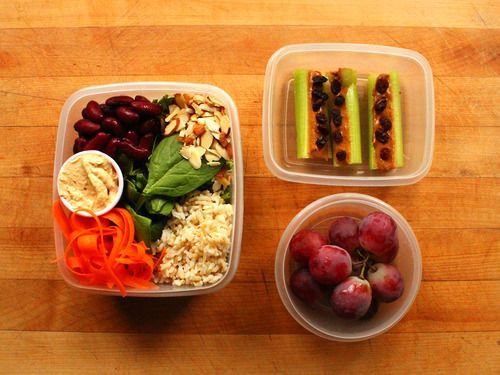 4
4
Are kidney beans safe for babies?
Yes, as long as the beans are cooked thoroughly (canned beans have already been cooked, so they don’t need to be cooked again). Undercooked beans can contain toxic compounds, such as phytohemagglutinin, that can lead to gastrointestinal upset and serious illness.5 Kidney beans in particular contain high amounts of this toxin.6 Boiling the bean for a minimum of 10 minutes has been found to destroy these compounds, though it is recommended to boil for at least 30 minutes to make sure.7 Slow cookers (such as Crock Pots) are not recommended as a method for cooking beans, since they often do not adequately get hot enough to break down the toxin.8
Other plant compounds nicknamed “antinutrients” such as lectins, oxalates, and phytates are also present in kidney beans.9 10 These compounds have gained the nickname “anti-nutrients” because they can decrease absorption of other specific nutrients, however they also break down during the process of soaking and cooking on high heat and are generally harmless in healthy people when consumed as part of a varied and balanced diet, so just make sure that kidney beans are fully cooked until tender before serving.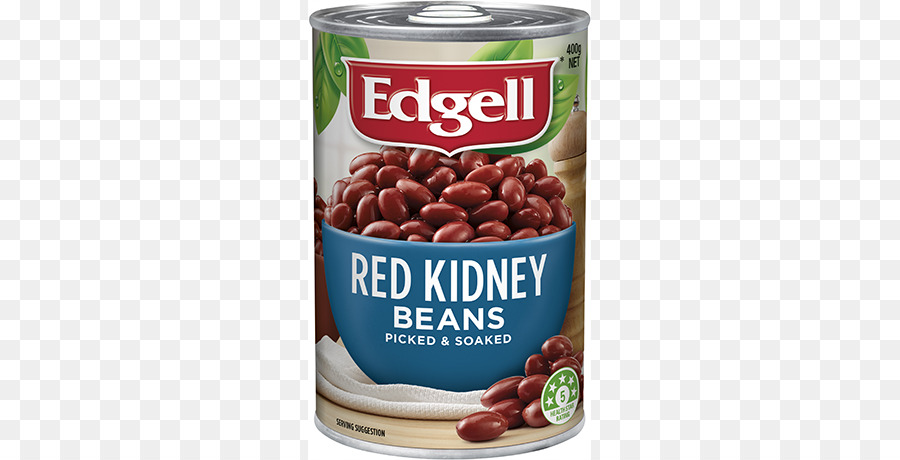 11 12
11 12
Are kidney beans a common choking hazard for babies?
Potentially, yes. Kidney beans are not a common choking hazard, but their small size and rounded shape can pose a risk, especially if not cooked thoroughly. To reduce the risk, make sure kidney beans are fully cooked and soft. If you’d like to reduce the risk further, you can press each bean between your fingers to flatten it, or mash the beans into a paste. As always, make sure you create a safe eating environment and stay within an arm’s reach of baby during meals. For more information on choking, visit our sections on gagging and choking and familiarize yourself with the list of common choking hazards.
Are kidney beans a common allergen?
No. Kidney beans are not considered to be a common allergen. However, cases of allergic reactions to red kidney bean have been reported, some of which have been severe.13 Phytohemagglutinin, a lectin protein, can trigger both toxic and allergic reactions to red kidney bean.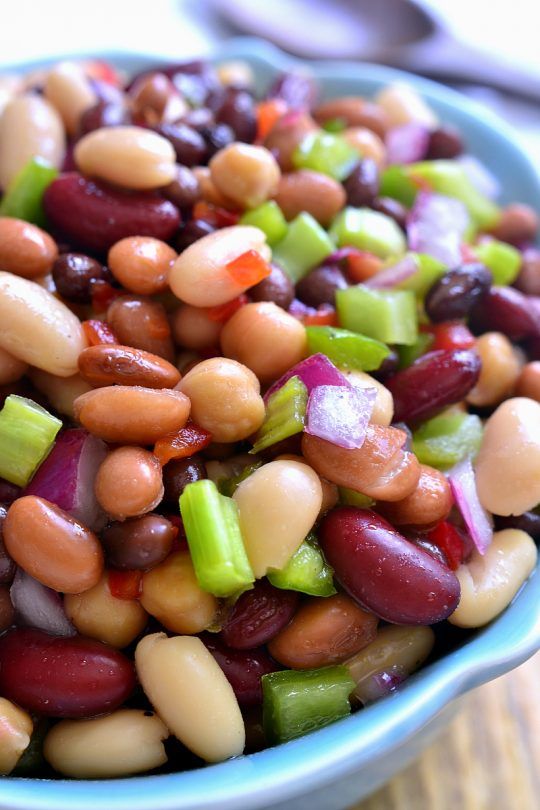 Adequately cooking the beans can help to break down the protein and reduce the risk of reactivity.14
Adequately cooking the beans can help to break down the protein and reduce the risk of reactivity.14
Bean allergies have been reported in some patients with allergies to other legumes, including peanut and soybean (which are common food allergens). However, being allergic to one type of legume does not necessarily mean that an individual will be allergic to others, although the risk of more than one legume allergy can increase.15 Fortunately, most individuals with peanut or soy allergy – more common legume allergies – are able to tolerate other legumes.16
Individuals with allergies to tree pollen and/or Oral Allergy Syndrome (also called pollen-food allergy syndrome) may be sensitive to legumes, such as kidney beans.17 18 Oral Allergy Syndrome typically results in short-lived itching, tingling, or burning in the mouth and is unlikely to result in a dangerous reaction.
As you would when introducing any new food, start by offering a small quantity for the first few servings. If there is no adverse reaction, gradually increase the quantity over future meals.
If there is no adverse reaction, gradually increase the quantity over future meals.
Do kidney beans need to be soaked before cooking?
No, although soaking dried kidney beans before cooking can help significantly reduce cooking time, as well as reduce the content of lectins and a gas-producing carbohydrate, raffinose, therefore making the bean easier to digest.19 20
Here are a couple of soaking methods:
- Overnight soak: Use a ratio of 1 lb (454 g) of dried beans and 10 c (2 ½ liter) water, and soak the beans in water for 4 or more hours or overnight. Drain and rinse the beans prior to cooking.
- Hot soak method: Use a ratio of 1 lb (454 g) of dried beans and 10 c (2 ½ liter) water, and bring the mixture to a boil for 2-3 minutes. Turn off the heat, then soak for a few hours. Drain and rinse the beans prior to cooking.
Can kidney beans help babies poop?
Yes. Beans are well-known for their ability to produce gas and poop.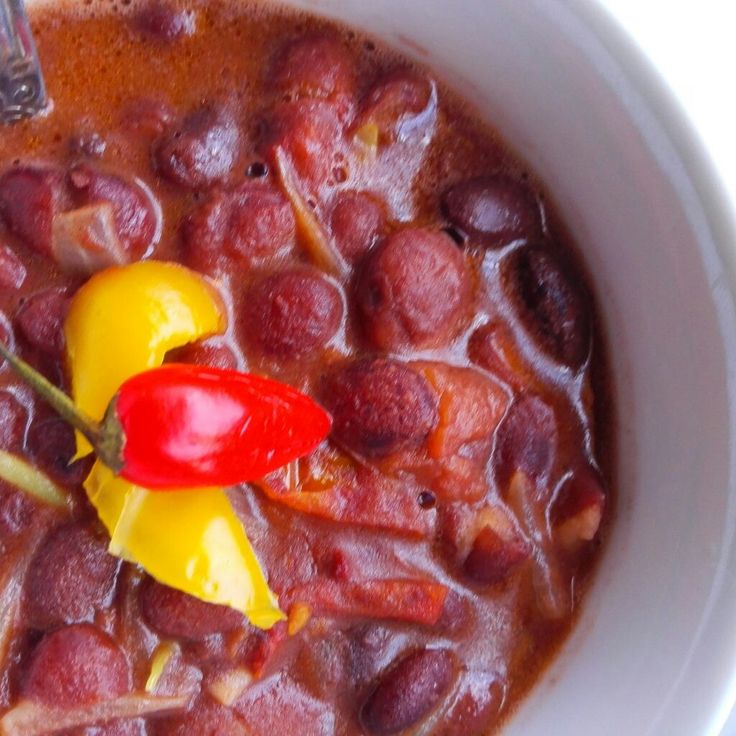 That’s because the high amounts of fibers and resistant starches interact with certain bacteria in the gut, resulting in gas, helping move poop, and contributing to a diverse ecosystem in the digestive tract.21 While gas is normal and expected, excess gas can be uncomfortable for baby. To minimize digestive discomfort, introduce high-fiber foods like kidney beans gradually and regularly in baby’s diet as tolerated.22 Remember that pooping patterns can vary significantly from baby to baby. If you have concerns about your baby’s pooping and digestive function, talk to your pediatric healthcare provider.
That’s because the high amounts of fibers and resistant starches interact with certain bacteria in the gut, resulting in gas, helping move poop, and contributing to a diverse ecosystem in the digestive tract.21 While gas is normal and expected, excess gas can be uncomfortable for baby. To minimize digestive discomfort, introduce high-fiber foods like kidney beans gradually and regularly in baby’s diet as tolerated.22 Remember that pooping patterns can vary significantly from baby to baby. If you have concerns about your baby’s pooping and digestive function, talk to your pediatric healthcare provider.
How do you prepare kidney beans with baby-led weaning?
Every baby develops on their own timeline, and the suggestions on how to cut or prepare particular foods are generalizations for a broad audience. Your child is an individual and may have needs or considerations beyond generally accepted practices. In determining the recommendations for size and shape of foods, we use the best available scientific information regarding gross, fine, and oral motor development to minimize choking risk.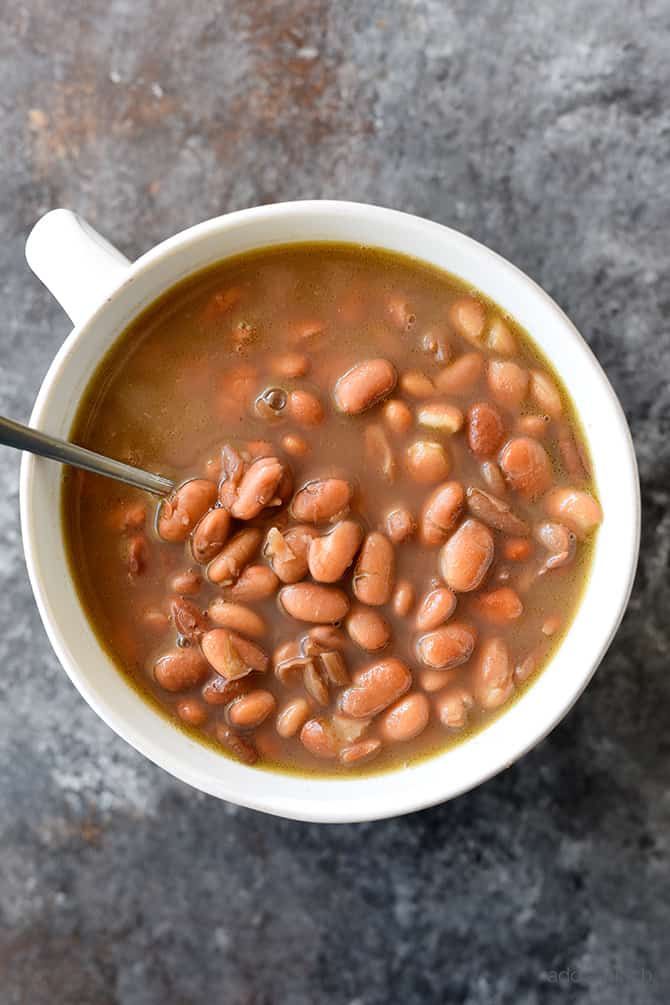 The preparation suggestions we offer are for informational purposes only and are not a substitute for child-specific, one-on-one advice from your pediatric medical or health professional or provider. It is impossible to fully eliminate all risk of a baby or child choking on any liquid, puree, or food. We advise you to follow all safety protocols we suggest to create a safe eating environment and to make educated choices for your child regarding their specific needs. Never disregard professional medical advice or delay in seeking it because of something you have read or seen here.
The preparation suggestions we offer are for informational purposes only and are not a substitute for child-specific, one-on-one advice from your pediatric medical or health professional or provider. It is impossible to fully eliminate all risk of a baby or child choking on any liquid, puree, or food. We advise you to follow all safety protocols we suggest to create a safe eating environment and to make educated choices for your child regarding their specific needs. Never disregard professional medical advice or delay in seeking it because of something you have read or seen here.
6 to 8 months old: Crush or blend cooked kidney beans into a textured mash or smooth paste. For added nutrition, stir in breast (human) milk, formula, olive oil, butter, or yogurt. When introducing beans, start with a small amount and gradually increase portion sizes to minimize any digestive discomfort. Let baby scoop the mash or paste, and if help is needed, pre-load a spoon or thinly spread some mash on another food.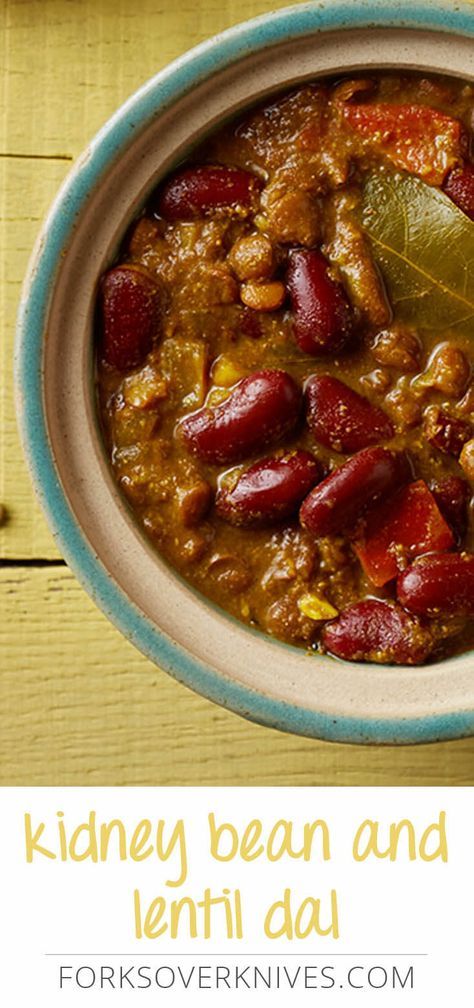 Alternatively, share kidney beans from your chili, salad, or stew. Simply pick out some of the beans and mash them for baby.
Alternatively, share kidney beans from your chili, salad, or stew. Simply pick out some of the beans and mash them for baby.
9 to 11 months old: Babies with a developing pincer grasp (where the thumb meets the pointer finger) may graduate to whole kidney beans that are fully cooked until soft and gently flattened. Alternatively, continue serving mashed or pureed kidney beans.
12 to 24 months old: By this age, toddlers are typically able to handle whole kidney beans that are fully cooked until soft. To encourage self-feeding with utensils, spear a kidney bean with an age-appropriate fork and lay the utensil next to the food for the child to try to pick up. If help is needed, pass the utensil in the air for the child to grab from you. If serving a whole bean makes you nervous, continue to mash or flatten the beans.
Flattened kidney beans for babies 9 months +Get baby’s caregivers on the same page with our guide, Baby-led Weaning with Daycare & Caregivers.
Recipe: Kidney Bean Dip
Yield: 1 c (240 ml)
Cook Time: 5 minutes
Age: 6 months+
Ingredients
- ¾ c (180 ml) cooked kidney beans
- 2 tbsp (30 ml) olive oil
- 1 tbsp (15 ml) lemon juice
- ¼ tsp (½ g) ground cumin (optional)
- 1 teething rusk (optional)
This recipe contains a common allergen: wheat (teething rusk). Only serve to a child after this allergen has been safely introduced.
Directions
- Rinse the beans to remove excess sodium.
- Blend or mash the beans, oil, and lemon juice until the dip is mostly smooth. A little texture is okay as long as there are no whole beans.
- Season the dip with cumin. Feel free to use your favorite spices.
Serve the Dip
- Offer dip to baby, then let the child self-feed.
- If help is needed, swipe a spoon, a teething rusk, or a resistive food in the dip, then hold it in the air in front of baby and let the child grab it from you.
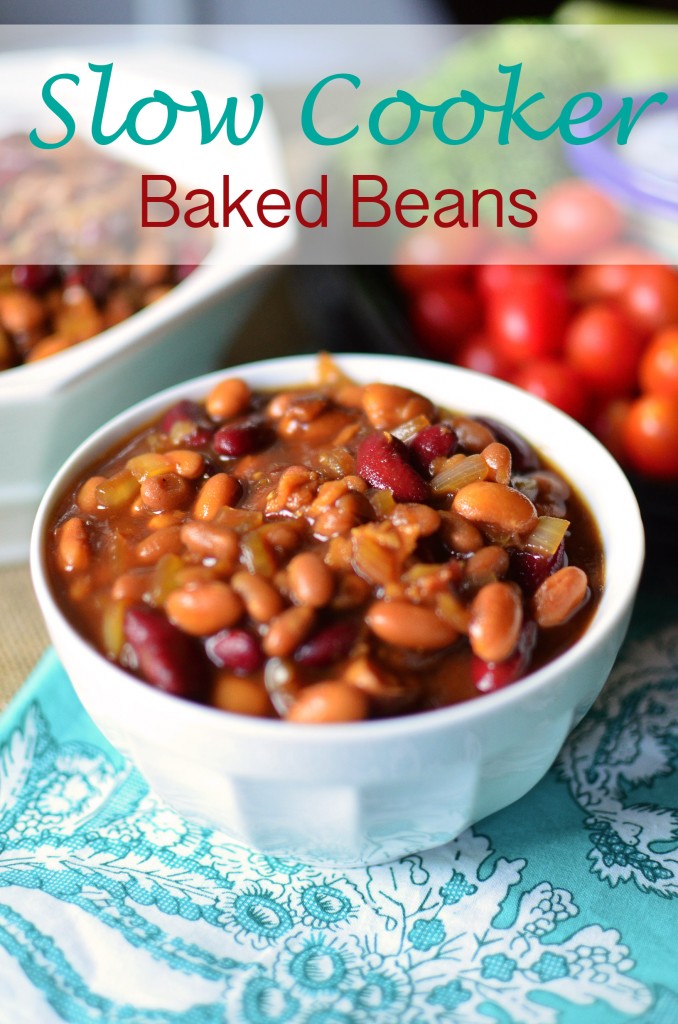
- Eat some dip alongside the child to model how it’s done.
To Store: Kidney Bean Dip keeps in an airtight container in the refrigerator for 3 days or in the freezer for 2 months.
Flavor Pairings
Kidney beans taste great with bell pepper, eggplant, pumpkin, quinoa, rice, and tomato.
Reviewed by
V. Kalami, MNSP, RD, CSP. Board-Certified Pediatric Dietitian and Nutritionist
K. Tatiana Maldonado, MS, CCC-SLP, CBIS, CLEC. Pediatric Feeding Therapist
K. Grenawitzke, OTD, OTR/L, SCFES, IBCLC, CNT. Pediatric Feeding Therapist
Dr. S. Bajowala, MD, FAAAAI. Board-Certified Allergist & Immunologist (allergy section)
Dr. R. Ruiz, MD, FAAP. Board-Certified General Pediatrician & Pediatric Gastroenterologist
- Hilger, J., Goerig, T., Weber. P., Hoeft, B., Eggersdorfer, M., Costa Carvalho, N… & Hoffmann, K. (2015). Micronutrient Intake in Healthy Toddlers: A Multinational Perspective.
 Nutrients. 7, 6938-6955; doi:10.3390/nu7085316. Retrieved September 13, 2022
Nutrients. 7, 6938-6955; doi:10.3390/nu7085316. Retrieved September 13, 2022 - Mustieles, V., & Fernández, M. F. (2020). Bisphenol A shapes children’s brain and behavior: towards an integrated neurotoxicity assessment including human data. Environmental health : a global access science source, 19(1), 66. DOI: 10.1186/s12940-020-00620-y. Retrieved September 13, 2022
- Rochester, J. R., & Bolden, A. L. (2015). Bisphenol S and F: A Systematic Review and Comparison of the Hormonal Activity of Bisphenol A Substitutes. Environmental health perspectives, 123(7), 643–650. DOI: 10.1289/ehp.1408989. Retrieved September 13, 2022
- Duyff, R.L., Mount, J.R. & Jones, J.B. (2011) Sodium Reduction in Canned Beans After Draining, Rinsing, Journal of Culinary Science & Technology, 9:2, 106-112, DOI: 10.1080/15428052.2011.582405. Retrieved September 13, 2022
- U. S. Food & Drug Administration. Handbook of Foodborne Pathogenic Microorganisms and Natural Toxins. Retrieved September 13, 2022
- U.
 S. Food & Drug Administration. Handbook of Foodborne Pathogenic Microorganisms and Natural Toxins. Retrieved September 13, 2022
S. Food & Drug Administration. Handbook of Foodborne Pathogenic Microorganisms and Natural Toxins. Retrieved September 13, 2022 - U. S. Food & Drug Administration. Handbook of Foodborne Pathogenic Microorganisms and Natural Toxins. Retrieved September 13, 2022
- Nciri, N., & Cho, N. (2017). New research highlights: Impact of chronic ingestion of white kidney beans (Phaseolus vulgaris L. var. Beldia) on small-intestinal disaccharidase activity in Wistar rats. Toxicology reports, 5, 46–55. DOI: 10.1016/j.toxrep.2017.12.016. Retrieved September 13, 2022
- Singh, B., Singh, J. P., Shevkani, K., Singh, N., & Kaur, A. (2017). Bioactive constituents in pulses and their health benefits. Journal of food science and technology, 54(4), 858–870. DOI: 10.1007/s13197-016-2391-9. Retrieved September 13, 2022
- Harvard T. H. Chan School of Public Health. Lectins. Retrieved September 13, 2022
- Deol, J. K., Bains, K. (2010). Effect of household cooking methods on nutritional and anti nutritional factors in green cowpea (Vigna unguiculata) pods.
 Journal of food science and technology, 47(5), 579–581. DOI:10.1007/s13197-010-0112-3. Retrieved September 13, 2022
Journal of food science and technology, 47(5), 579–581. DOI:10.1007/s13197-010-0112-3. Retrieved September 13, 2022 - Chitra, U., Singh, U., Rao, P.V. (1996). Phytic acid, in vitro protein digestibility, dietary fiber, and minerals of pulses as influenced by processing methods. Plant foods for human nutrition (Dordrecht, Netherlands), 49(4), 307–316. DOI:10.1007/BF01091980. Retrieved September 13, 2022
- Rougé, P., Culerrier, R., Thibau, F., Didier, A., & Barre, A. (2011). A case of severe anaphylaxis to kidney bean: phaseolin (vicilin) and PHA (lectin) identified as putative allergens. Allergy, 66(2), 301–302. DOI: 10.1111/j.1398-9995.2010.02466.x. Retrieved September 13, 2022
- Rodhouse JC, Haugh CA, Roberts D, Gilbert RJ. (1990). Red kidney bean poisoning in the UK: an analysis of 50 suspected incidents between 1976 and 1989. Epidemiol Infect;105(3):485-91. Retrieved September 13, 2022
- Chan, E.S., Greenhawt, M.J., Fleischer, D.M., Caubet, J. C. (2019). Managing Cross-Reactivity in Those with Peanut Allergy.
 The journal of allergy and clinical immunology. In practice, 7(2), 381–386. DOI: 10.1016/j.jaip.2018.11.012. Retrieved September 13, 2022
The journal of allergy and clinical immunology. In practice, 7(2), 381–386. DOI: 10.1016/j.jaip.2018.11.012. Retrieved September 13, 2022 - Bublin, M., & Breiteneder, H. (2014). Cross-reactivity of peanut allergens. Current allergy and asthma reports, 14(4), 426. DOI: 10.1007/s11882-014-0426-8. Retrieved September 13, 2022
- Kashyap, R.R., Kashyap, R.S. (2015). Oral Allergy Syndrome: An Update for Stomatologists. Journal of allergy, 2015, 543928. DOI:10.1155/2015/543928. Retrieved September 13, 2022
- Oxford University Hospitals. Oral allergy syndrome. Retrieved September 13, 2022
- Queiroz Kda S, de Oliveira AC, Helbig E, Reis SM, Carraro F. Soaking the common bean in a domestic preparation reduced the contents of raffinose-type oligosaccharides but did not interfere with nutritive value. J Nutr Sci Vitaminol (Tokyo). 2002 Aug;48(4):283-9. doi: 10.3177/jnsv.48.283. Retrieved September 13, 2022
- Fabbri, A.D.T., Crosby, G.A. (2016). A review of the impact of preparation and cooking on the nutritional quality of vegetables and legumes.
 International Journal of Gastronomy and Food Science 3; 2-11. DOI: 10.1016/j.ijgfs.2015.11.001. Retrieved September 13, 2022
International Journal of Gastronomy and Food Science 3; 2-11. DOI: 10.1016/j.ijgfs.2015.11.001. Retrieved September 13, 2022 - Singh, B., Singh, J. P., Shevkani, K., Singh, N., & Kaur, A. (2017). Bioactive constituents in pulses and their health benefits. Journal of food science and technology, 54(4), 858–870. DOI: 10.1007/s13197-016-2391-9. Retrieved September 13, 2022
- Quagliani, D., & Felt-Gunderson, P. (2016). Closing America’s Fiber Intake Gap: Communication Strategies From a Food and Fiber Summit. American journal of lifestyle medicine, 11(1), 80–85. DOI: 10.1177/1559827615588079. Retrieved September 13, 2022
Kidney Bean Organic Baby Food
Kidney Bean
Ingredients: Organic Kidney Bean
Get StartedWhy it Matters for Your Baby’s Development
This blend was made to support your baby's Sleep.
Featuring the right blend of nutrients
FIBER • IRON • VITAMIN A • COPPER • MAGNESIUM
What to Expect
Gradute to thicker single-ingredient purees, for babies ready to explore new foods.
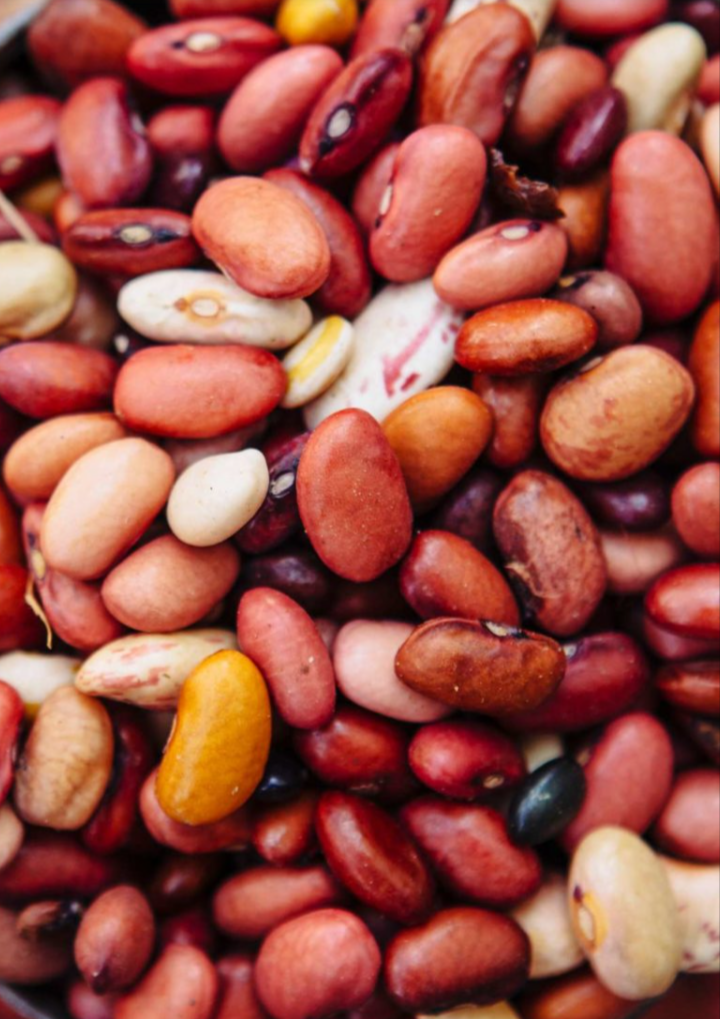
Nutrition Facts
Serving Instructions
Our meals are prepared weekly and stay fresh in the fridge for 7 days or 2 months in the freezer. Please consume within 24 hours once opened. Please refrigerate upon delivery. Blends can be warmed to baby's preference. Please remove from jar and place in a microwave safe bowl or heat on the stove. Always stir, let stand 30 seconds, and taste-test before feeding. Blends do not need to be warmed to be eaten.
Gluten Free
Plant Based
Non-GMO
BPA Free
No Sugar Added
No Preservatives
Dairy Free
Certified Kosher
6+ Months
Kidney Bean
Ingredients: Organic Kidney Bean
Get Started
Why it Matters for Your Baby’s Development
This blend was made to support your baby's Sleep.

Featuring the right blend of nutrients
FIBER • IRON • VITAMIN A • COPPER • MAGNESIUM
What to Expect
Gradute to thicker single-ingredient purees, for babies ready to explore new foods.
Gluten Free
Plant Based
Non-GMO
BPA Free
No Sugar Added
No Preservatives
Dairy Free
Certified Kosher
Nutrition Facts
Serving Instructions
Our meals are prepared weekly and stay fresh in the fridge for 7 days or 2 months in the freezer. Please consume within 24 hours once opened. Please refrigerate upon delivery. Blends can be warmed to baby's preference. Please remove from jar and place in a microwave safe bowl or heat on the stove. Always stir, let stand 30 seconds, and taste-test before feeding. Blends do not need to be warmed to be eaten.
Always stir, let stand 30 seconds, and taste-test before feeding. Blends do not need to be warmed to be eaten.
Baby Food for 6 Month +
Purple Sweet Potato
Learn more >
Apple
Learn more >
Black Bean
Learn more >
Mango
Learn more >
Cauliflower
Learn more >
Carrot
Learn more >
Picky Eater Approved!
Noel
Verified Reviewer
All around best baby food
We love all the interesting food combinations, textures, and nutrient dense finger foods. We tell everyone we use Yumi.

Megan
Verified Reviewer
Flavors my son loved
My son really liked the sweet potato cheesecake, peach crumble bowl and purple sweet potato and blueberry. He also really enjoyed the beet puffs.
Baby Food Delivery.
Made Fresh Weekly.
Select from over 100+ flavors
Transition to more complex textures simply and easily.
Skip or cancel anytime!
Beans in baby food
Feature of : beans contain a large amount of protein. Introduced into the diet of a child from two years.
Beans belong to the legume family. This is a herbaceous annual plant. There are approximately 150 types of beans.
Read also: How to cook delicious green beans: 3 recipes
100 g of beans contains 298 kcal
| Vitamins | Macronutrients | Microelements |
| Vitamin PP - 2. Vitamin B1 (thiamine) - 0.5 mg Vitamin B2 (riboflavin) - 0.18 mg Vitamin B5 (pantothenic) - 1.2mg Vitamin B6 (pyridoxine) - 0.9 mg Vitamin B9 (folic) - 90 mcg Vitamin E (TE) - 0.6 mg Vitamin PP (niacin equivalent) - 6.4 mg | Calcium - 150 mg Magnesium - 103 mg Sodium - 40 mg Potassium - 1100 mg Phosphorus - 480 mg Chlorine - 58 mg Sulfur - 159 mg | Iron - 5.9 mg Zinc - 3.21 mg Iodine - 12.1 mcg Copper - 580 mcg Manganese - 1.34 mg Selenium - 24.9mcg Chromium - 10 mcg Fluorine - 44 mcg Molybdenum - 39.4 mcg Boron - 490 mcg Vanadium - 190 mcg Silicon - 92 mg Cobalt - 18.7 mcg Aluminum - 640 mcg Nickel - 173.2 mcg Titanium - 150 mcg |
Bean seeds are extracted from the pods, dried and used to prepare various dishes.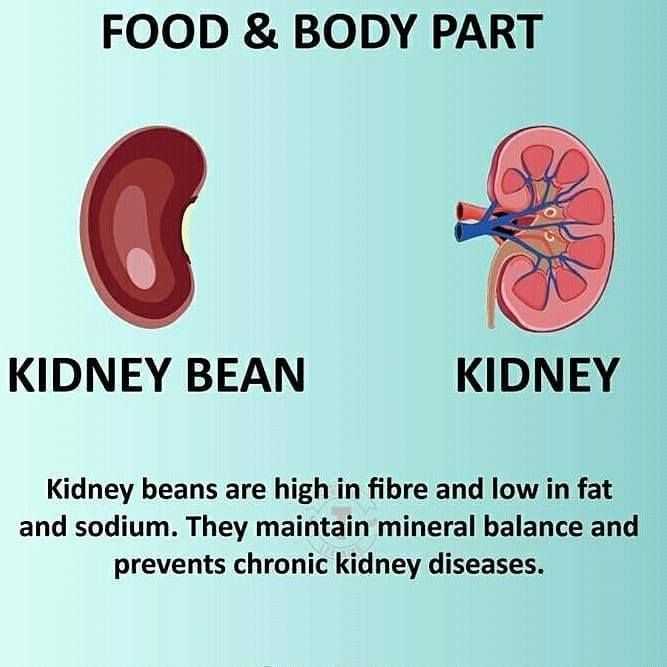 It can be frozen, pickled and salted.
It can be frozen, pickled and salted.
Composition and nutritional properties of beans
100 g of beans contain:
- Proteins - 21 g
- Fats - 2 g
- Carbohydrates - 47 g
- Dietary fiber - 12.4 g
- Water - 14 g
- Mono- and disaccharides - 3.2 g
- Starch - 43.8 g
- Ash - 3.6 g
- Saturated fatty acids - 0.2 g
Read also: Recipe of the week. Beans and ham and red pepper salad
Useful properties of beans
For people with diabetes, beans are the most essential food in the diet. Thanks to arginine, beans lower their sugar content. Arginine also has an insulin-like effect on metabolism. Also, beans have a beneficial effect on the human nervous system. Beans also prevent the formation of tartar as it has antibacterial properties.
With hypertension and atherosclerosis, as well as in violation of the rhythm of cardiac activity, experts advise eating beans.
Contraindications for use
It is not recommended to abuse beans for the elderly, as well as for gastritis with high acidity of gastric juice, cholecystitis and colitis.
Kidney beans
In the children's diet, it is better to use only young beans, otherwise the child may have gas formation. You can cook bean dishes for your baby 2-3 times a week. This is enough for the child to receive the required amount of vegetable protein, minerals and fiber. Dishes can be from canned, fresh and frozen beans.
Preparation and consistency
It is better to cook beans with vegetables, it is better absorbed this way. It is not recommended to combine with meat, beans already have enough protein. You need to cook it in a large amount of water, without a lid and with a strong boil. Salt at the end of cooking.
Bean recipes for children
Beans with carrots
Ingredients:
- Beans - 1 cup
- Carrot - 1 pc.

- Unrefined sunflower oil - 4 tbsp. spoons
- Lemon juice - 2 tbsp. spoons
- Sugar - 1 teaspoon
- Salt - 1/3 teaspoon
Preparation:
Pre-soak the beans in cold boiled water for 10 hours. Then rinse it and fill it with raw water. Then you need to put it on a small fire and cook for about two hours. When the beans are ready, drain the water and chop the beans themselves.
Carrots need to be boiled or baked in their skins, then peeled and cut into slices. Then you need to mix beans and carrots, and pour dressing: slightly whipped juice, butter, salt and sugar.
Bean soup puree
Ingredients:
- Meat broth - 300 g
- Beans - 60 g
- Potato - ¼ tuber
- Carrots - ¼ pcs.
- Onion - ¼ part
- Butter - 1 teaspoon
- Salt
Preparation:
Beans must be pre-soaked for 2 hours and boiled until tender.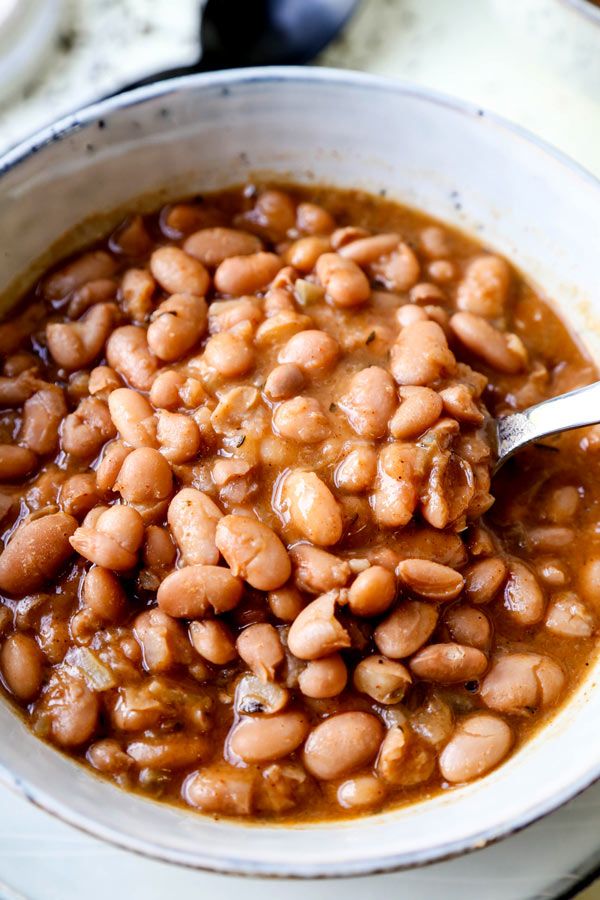 In meat broth, brought to a boil, add grated carrots, potatoes, chopped onions. Cook for 15 minutes, then add the beans and cook for another ten minutes. Grind everything in a blender, add oil and bring to a boil. You can serve croutons and sour cream to the puree soup.
In meat broth, brought to a boil, add grated carrots, potatoes, chopped onions. Cook for 15 minutes, then add the beans and cook for another ten minutes. Grind everything in a blender, add oil and bring to a boil. You can serve croutons and sour cream to the puree soup.
Red bean soup
Ingredients:
- Red beans - 60 g
- Onion - 25 g
- Walnuts - 15 g
- Flour - 3 g
- Ghee - 10 g
- Salt, red pepper, coriander greens
Preparation:
You need to pour the beans with water, bring to a boil and cook over low heat until tender. Then pour the water into a glass and divide into two halves. Grind the first half and dilute with broth until a homogeneous mass is formed, add finely chopped onion. Take the remaining half of the beans, combine with flour, crushed walnuts, add the mashed beans. Add salt, red pepper, cilantro and bring to a boil.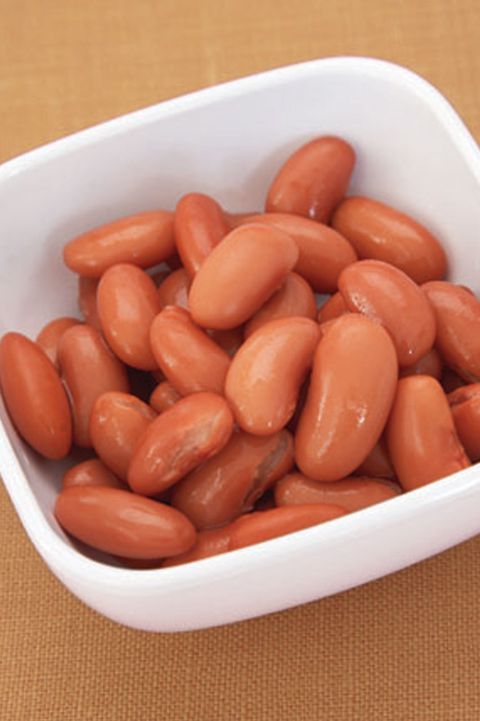 The soup is ready!
The soup is ready!
Bon appetit!
Read more recipes in the Baby food section
For information about when to introduce new foods into the baby's diet, about the beneficial properties of these foods and how to diversify the baby's menu with new dishes, read the Encyclopedia of Baby Food
When can a child start giving beans? ⋆ Delicious dinner
At what age can a child be given beans - young green beans from 7-8 months, and mature - not earlier than two years. Legumes diversify the diet of the baby and will benefit him if they are cooked correctly and not eaten too often.
Benefits and harms
What are the benefits and possible harm of beans and at what age children can legumes is determined by the uniqueness of these crops:
- they have all the beneficial properties of plants: they contain vitamins, minerals and fiber necessary for the normal functioning of the stomach and intestines;
- soybeans, beans, lentils, peas have a lot of protein, more only in meat;
- beans, in addition to vitamins B, C, PP, K, contain copper, zinc, iron, magnesium, calcium, iodine, which is precious in central Russia, and other useful substances;
- this type of legume has a weak diuretic effect, is able to remove heavy metals and radionuclides from the body;
- Another plus is extremely rare allergic reactions.

But there is also a disadvantage, which is that this is a rather heavy food that causes increased gas formation, constipation.
When and how to feed beans
When depends on whether they are young or mature. In the first case, these are thin green pods with delicate soft grains inside; it is sold both fresh and frozen.
Mature has hard grains in yellowish-white (smaller pods) or red (larger) skins.
Green beans
The earliest age children can eat green beans is 7-8 months, like other vegetable foods. Especially for baby food, it is sold as a ready-made puree in jars, usually mixed with other vegetables, less often as a one-component baby food.
Dry (white or red)
Mature beans are too heavy for the stomach and intestines of young children. They are digested with difficulty, even well-soaked, boiled and mashed. If there are no problems with digestion, then the optimal period from which age a child can have red beans is two years, and not as a whole side dish, but as part of other dishes.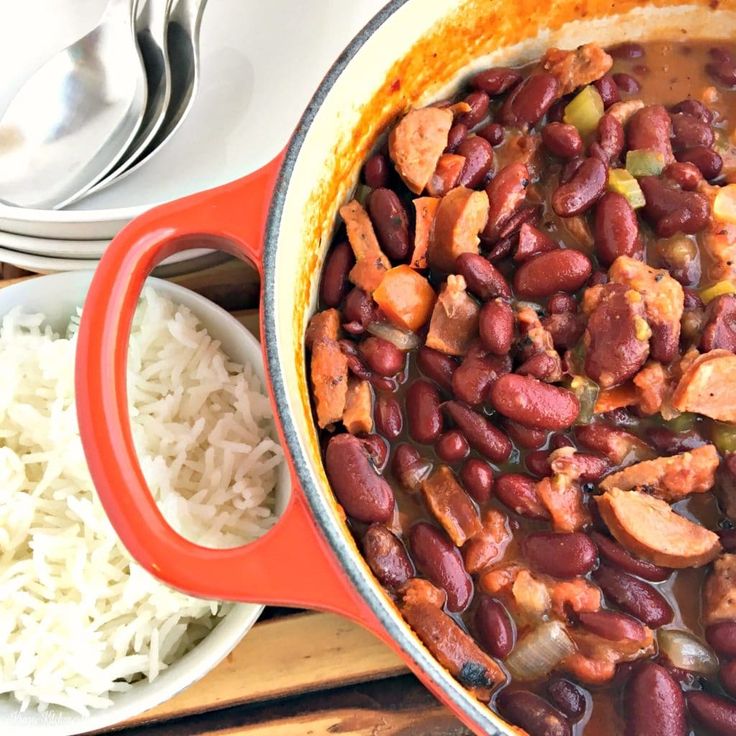
IMPORTANT!
With canned beans, wait up to a minimum of three years, whether green, white, or red.
Soups
A great way to introduce legumes is to add them to regular soups or pureed soups. Beans go well with other vegetables: cauliflower, broccoli, carrots, pumpkin.
The principle is the same: at what age a child can have bean soup depends on the maturity of the beans. Start offering green pods to your baby at 7–8 months, white or red first courses after 2 years.
How to introduce complementary foods
The product must be introduced into complementary foods gradually. Give your child a half teaspoon of one-component puree to try. If the stomach coped, they don’t suffer more than usual colic, there was no constipation or diarrhea, next time increase the amount.
How much to give
Don't get carried away. If legumes are present in the baby's diet twice a week, this is quite enough.
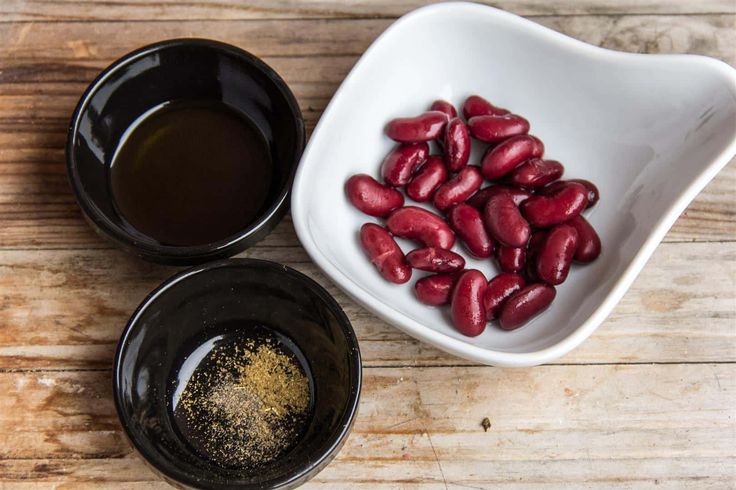

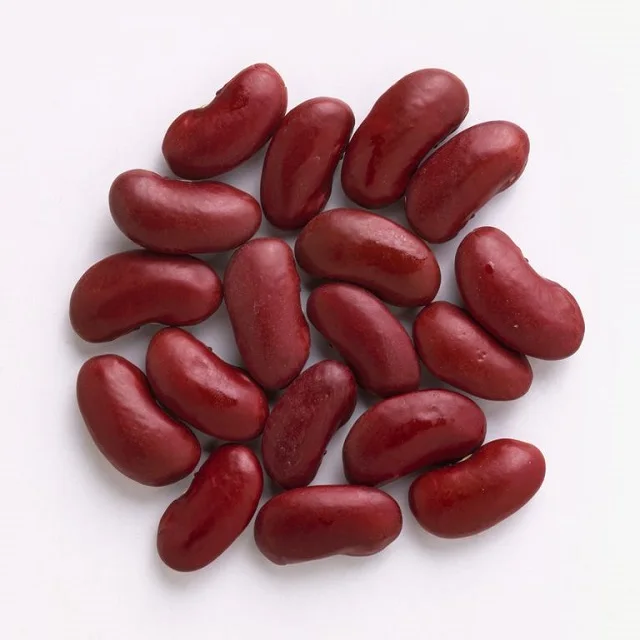 1 mg
1 mg 
